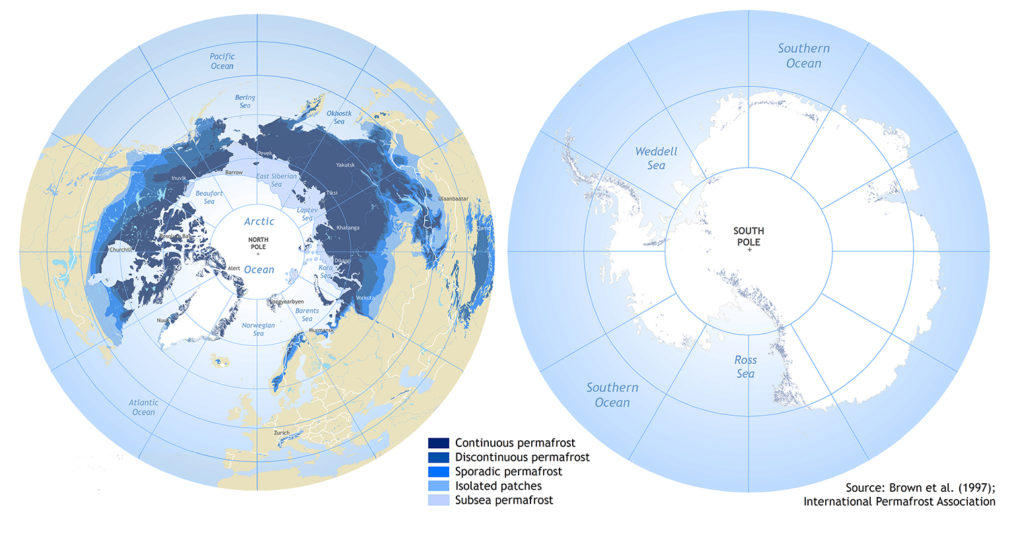Guest post: The irreversible emissions of a permafrost ‘tipping point’
Across vast swaths of the northern hemisphere’s higher reaches, frozen ground holds billions of tonnes of carbon.
As global temperatures rise, this “permafrost” land is at increasing risk of thawing out, potentially releasing its long-held carbon into the atmosphere.
Abrupt permafrost thaw is one of the most frequently discussed “tipping points” that could be crossed in a warming world. However, research suggests that, while this thawing is already underway, it can be slowed with climate change mitigation.Tipping pointsThis article is part of a week-long special series on “tipping points”, where a changing climate could push parts of the Earth system into abrupt or irreversible change
Yet, what is irreversible is the escape of the carbon that has been – and is being – emitted. The carbon released from permafrost goes into the atmosphere and stays there, exacerbating global warming.
In short, what happens in the Arctic does not stay in the Arctic.
Permafrost and the global climate
Permafrost is ground that has been frozen for at least two consecutive years. Its thickness ranges from less than one metre to more than a kilometre. Typically, it sits beneath an “active layer” that thaws and refreezes every year.
A warming climate puts this perennially frozen ground at risk. When temperatures rise, permafrost thaws – it does not melt.
There is a simple analogy: compare what happens to an ice cube and a frozen chicken when they are taken out of the freezer. At room temperature, the former will have melted, leaving a small pool of water, but the chicken will have thawed, leaving a raw chicken. Eventually, that chicken will start to decompose.
This is exactly what happens to permafrost when temperatures increase. One quarter of the landmass of the northern hemisphere is underlain by permafrost, which acts like Earth’s gigantic freezer and keeps enormous amounts of organic matter frozen.

…click on the above link to read the rest of the article…